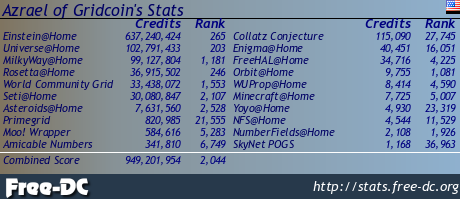Byte (November 1988 – IBM Special Edition)

Cover of the 1988 IBM Special Edition of Byte
Byte was one of the earliest and most in-depth computer magazines around while it was being published. It began life in the 1970s and lasted all the way into the 1990s. This issue is from November 1988 and is one of two issues published that month. Once the IBM PC became a huge deal, Byte started doing a yearly special "IBM" issue and did so for a number of years. This is one of those special IBM issues and it includes:
Trends
- Editorial: Two Roads - There was still a question at this time as to whether the IBM PS/2 would set the new standard for PCs to come or the AT/386 standard. We all know how that turned out...
- Probing the State of the Art - More about the latest in the PC world including both PS/2 and AT/386 standards. Plus a look at advanced operating systems like OS/2 and Unix. Also, I look at new peripheral devices like the HiREZ mouse from Logitech, the Kyocera F-3010 laser printer, the ScanJet from HP and more.
- Mapping the Software World - A look at some of the common types of software available and good representative examples, including integrated software packages, word processing software, desktop publishing software, spreadsheets, database management, telecommunications, drafting, painting, utilities and more.
- Beefed-up Bulletin Boards - While most hobby BBSes may have been run on a single phone line and a basic PC, there were some much larger systems out there. This article covers a few of them including Exec-PC (54 dial-up lines, 1.48 gigabytes of files), Invention Factory (24 dial-up lines, 1.2 gigabytes), Thousand Oaks Technical Database (160 megabyte), Utilities Exchange (117 megabytes). These systems offer maximum dial-up speeds of 2400bps to 9600bps. According to this article, at the time there were over 10,000 BBSes in the U.S.
- Migrating: Up or Down? - Migrating from mainframes to PCs and vice versa.

Table of Contents from the 1988 IBM Special Edition of Byte
Technology
- The Micro Channel versus the AT Bus - The advantage of the PS/2 32-bit MCA bus was speed. The advantage of the AT Bus was significantly lower cost and greater compatibility with existing expansion cards. At the end of the day, it turned out that the PS/2 wasn't really faster than the fastest AT based machines and those AT machines were a whole lot cheaper. The rest is history. It wouldn't be long before 32-bit "AT" solutions came along like EISA and VLB.
- Keeping Up with the CPU - A processors in the PC increased in speed from 4.77 MHz to 8 MHz to 16 MHz and beyond, the bus (and system memory) started having trouble keeping up. Some solutions at the time were to introduce wait states (negating much of the speed advantage of faster CPUs), using faster DRAM (which was more expensive), or using SRAM (also expensive). For 386 based systems, the approach settled on was using standard DRAM but including a smaller amount of SRAM for cache. Essentially, the same approach at a high level is still used today with cache having long ago moved from the motherboard into the processor itself. Of course now CPUs have much more cache that systems back then had total memory. A common amount of memory in high end 386 desktop systems in 1988 would have been 1 or 2 MB. The relatively old at this point Ryzen 1700 I am typing this on has 8MB of L3 cache plus smaller amounts of L2 and L1.
- Whither IBM and Unix? - A look a the various implementations of Unix available including PX/IX, ISC, Xenix, and most recently for IBM, AIX. Plus, OS/2 versus Unix.
- DOS Meets Unix - Hosting DOS applications like Lotus 1-2-3, dBASE III, and WordPerfect in Unix.
Techniques
- OS/2 Communications - A look at communications software in OS/2. It turns out that creating such software that takes advantage of OS/2's multitasking capabilities is not especially difficult compared to DOS. OS2COMM (including source) is a simple com program for OS/2 that is looked at here as an example.
- Keep Your PC Healthy - Tips for keeping your PC in working order including things like keeping your environment dust free, not smoking around your computer, making sure it has proper airflow, and more. Plus, software oriented solutions like defragmenting your hard drive.
- Writing OS/2 Graphics - Technical considerations for creating graphics on OS/2, including things like privilege levels, 286 protected mode, directly accessing graphics hardware, multitasking and more.

Back cover of the 1988 IBM Special Edition of Byte
Read more: https://www.megalextoria.com/wordpress/index.php/2023/10/12/byte-november-1988-ibm-special-edition/
Check out my other Social Media haunts (though most content is links to stuff I posted on Hive or reposts of stuff originally posted on Hive):
Wordpress: https://www.megalextoria.com/wordpress
Tumblr: https://www.tumblr.com/blog/darth-azrael
Twitter: https://twitter.com/Darth_Azrael
Blogger: https://megalextoria.blogspot.com/
Odyssee: https://odysee.com/@Megalextoria:b
Rumble: https://rumble.com/c/c-2385054
Daily Motion: https://www.dailymotion.com/Megalextoria
Books I am reading or have recently read:
The Templars by Dan Jones
The Lies of Locke Lamora by Scott Lynch
Republic of Thieves by Scott Lynch

https://inleo.io/threads/darth-azrael/re-darth-azrael-vsm6sqw9
The rewards earned on this comment will go directly to the people ( darth-azrael ) sharing the post on LeoThreads,LikeTu,dBuzz.